Last Wednesday, before any hint of snow had fallen, Dave Weaver and I took our Wednesday Morning Birding audience from one end of Plum Island to the other. So many waterfowl had appeared in the Merrimack River off of Joppa Flats that we thought it would be wise to check the island’s North End. Were we glad we did! The incoming tide set up the usual eddy right on the beach near the Captain’s Lady dock, and two beautiful, basic-plumaged Red-necked Grebes were foraging right off shore along the eddy line. Since they didn’t mind us, we enjoyed them for as long as we wished. We also saw White-winged Scoters, mostly females, scattered around in the channel.

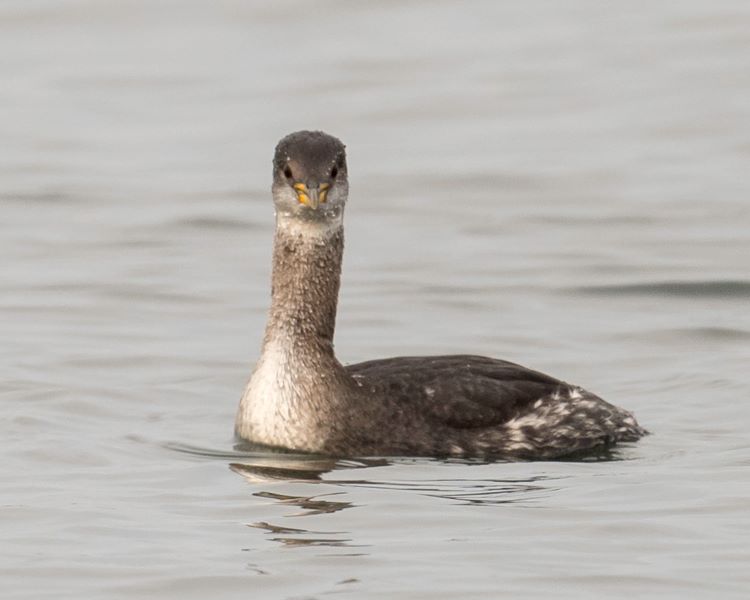
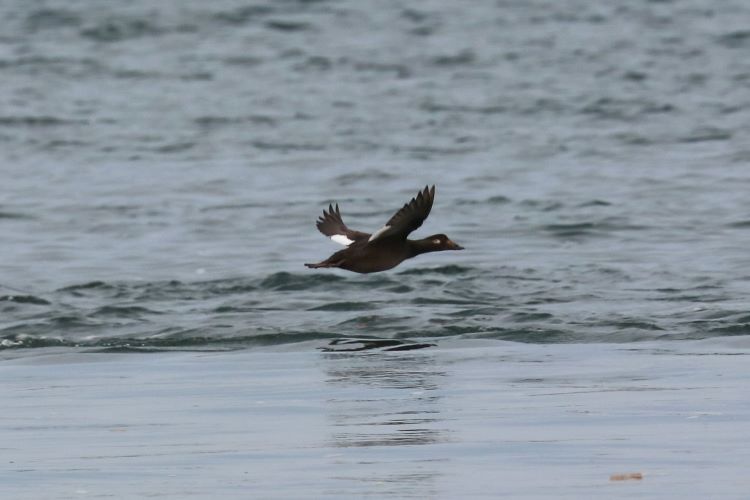
A raft of 20 or more Common Eiders loitered near the seal rocks on the Salisbury side of the river. Many more eiders, upwards of a hundred, were stretched along the jetty farther out. The mouth of the basin, often a place for “less seaworthy” ducks, was fairly empty, but way off near town, probably easily visible from Joppa Flats Education Center, we could see a tight flock of Common Goldeneyes. One Red-throated and two Common Loons helped to complete what we expect as the core of the winter avifauna in the mouth of the river, although the large number of Long-tailed Ducks we await has yet to appear.

Our next site was the Main Panne pull-off on Parker River National Wildlife Refuge, where many American Black Ducks were in the company of a good contingent of Northern Pintails, several Gadwalls, and a drake American Wigeon. A couple of Yellow-rumped Warblers voiced their characteristic checks invisibly from the thicket, a phenomenon that continued at other sites. From there, we decided to skedaddle all the way south, with occasional pauses along the way to spy a sparrow, a Northern Harrier, and even an American Coot for a brief moment in Stage Island Pool.
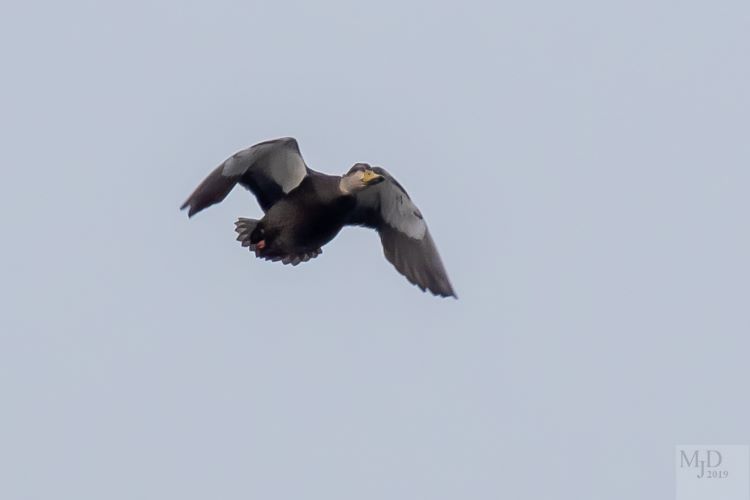
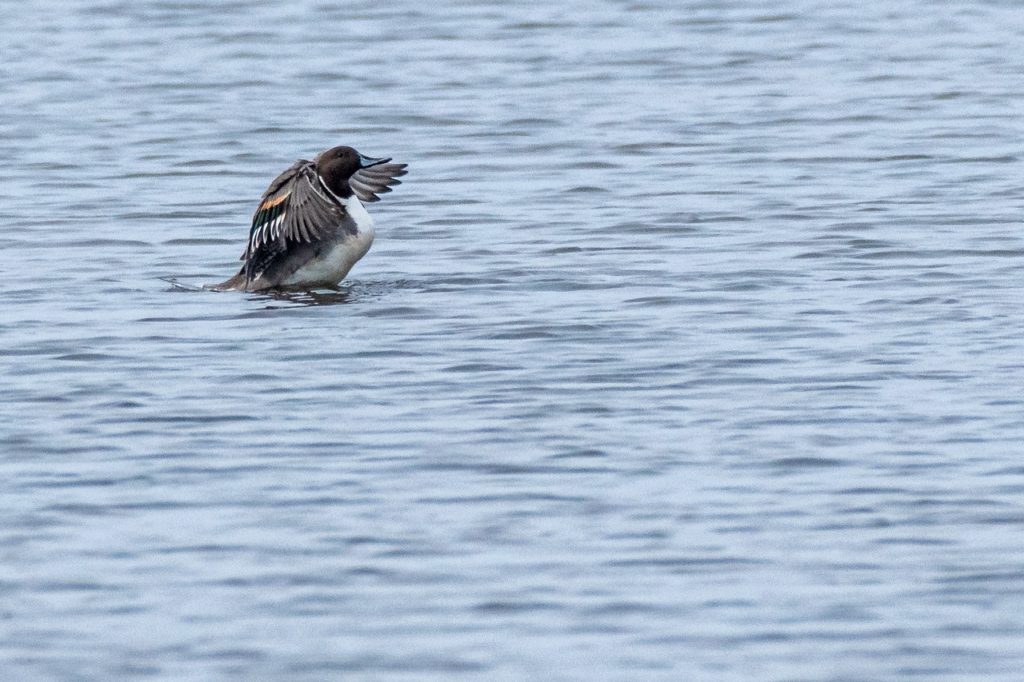
We completed our north-to-south run of the entire island in anticipation of seeing a reported rare Lesser Black-backed Gull at Sandy Point. We easily walked along the wind-beaten wrack line towards an area where gulls were roosting as the high tide continued to rise. We scanned a group of Great Black-backed Gulls and Herring Gulls, then a bigger bunch of Herring and Ring-billed Gulls farther around the point. Our first surveys yielded no more than these three species among the shifting arrivals and departures. Then, suddenly, something got all of the birds up, and we clearly saw one that showed the proper in-between coloration of a Lesser Black-backed Gull.
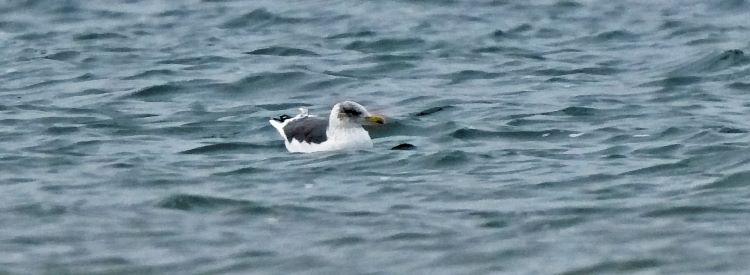
Our target bird had the good sense to sit down on the water next to a Herring Gull, so we could easily compare them. Everybody was able to get a look at this uncommon species. As a Lesser Black-backed Gull was reported at Sandy Point throughout last winter, we can conjecture that it is the same bird, returned to its accustomed wintering spot. After all, the (presumably) same Glaucous Gull has appeared for many years at the Seabrook Harbor bathroom cupola, and a marked Ring-billed Gull has returned to Sandy Point for many years. It may be reasonable to assume that roosting adult gulls we see on rooftops, wharves, and beaches are the same birds, day after day. It’s only when we see individuals that are marked, or conspicuous as uncommon species, that we can conclude that we’re seeing a behavioral pattern.
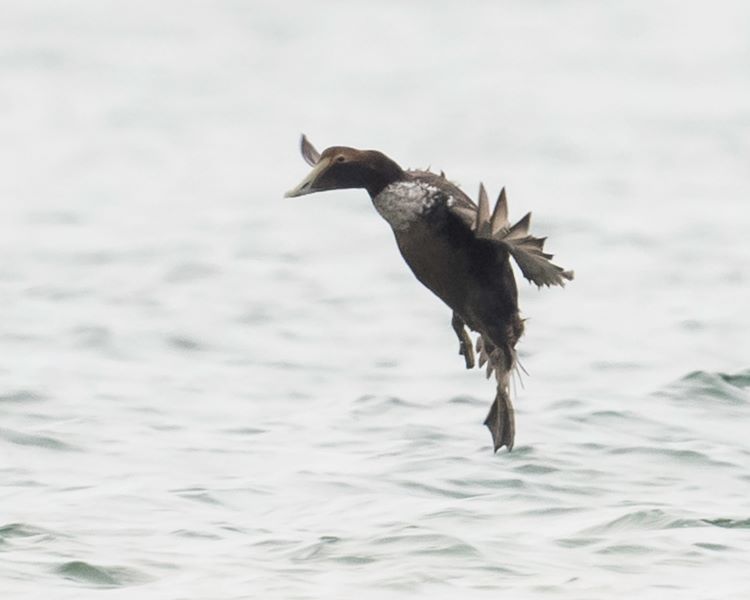
With this singular gull under our belt, we headed for Hellcat, skipping Emerson Rocks due to the high tide and the many shotgun blasts we heard from over the dunes. Some hunters in a duck boat had decided to try their luck there. This is the one time of year, and that is the one spot on Plum Island, where birders and hunters can butt into each other a bit. Of course we want as many ducks as possible to be there! But, we always remember that it was hunters who paid the lion’s share of the cost of the refuge property in the first place. Hence, our grudging acceptance and agreement to “live and let hunt.”
On our way north, a flock of five American Pipits stood briefly on the wooden guard rail along the South Marsh. It was a bit futile for the people in the following vehicles to find them, though the birds did take to racing about the increasingly flooded edge of the marsh. The dike at Hellcat was both fun and a bit boring. The fun was in seeing the almost eerie disappearance of the marsh under a very high tide, almost the highest of the year. But the consequence was that the ducks that are normally confined to Bill Forward Pool were spread all over the inundated marsh, and there was not much to look at. Instead, we contented ourselves to take a quick look at some common passerines in the parking lot and head home.

This week, we will venture to areas north of Plum Island and inland, as the Parker River Refuge will be closed for the annual deer hunt. We anticipate plenty of Hooded Mergansers, and yesterday I found an Iceland Gull and Horned Larks at Hampton Beach State Park….

Our List:
Canada Goose – common.
Mute Swan (2) – ads, Main Panne.
Gadwall (5) – Main Panne.
American Wigeon (4) – 1, Main Panne; 4, small pannes.
Mallard (~ 20) – mostly vicinity of Hellcat; a few, Main Panne.
American Black Duck – common.
Northern Pintail (~ 35) – ~ 25, Main Panne; balance small pannes & Bill
Forward Pool (BFP).
Common Eider – common; mostly north end, then various.
White-winged Scoter (~ 13) – ~ 12, north end; 1, Sandy Point.
Bufflehead – common; various.
Common Goldeneye (~ 30) – north end.
Hooded Merganser (1) – Hellcat flyover.
Red-breasted Merganser (2) – north end.
Red-necked Grebe (2) – north end.
Rock Pigeon
Mourning Dove
American Coot (1) – Stage Island Pool (thanks, Doug!).
Ring-billed Gull (5) – Sandy Point.
Herring Gull – common.
Lesser Black-backed Gull (1) – Sandy Point.
Great Black-backed Gull (~ 22) – 7, north end; ~ 15, Sandy Point.
Red-throated Loon (1) – north end.
Common Loon (2) – north end.
Double-crested Cormorant (2) – north end.
Great Blue Heron (3) – 1, marsh s. of Cross Farm Hill; 1, BFP; 1, Hay Marsh..
[Great Blue Heron (1) – marsh across PI Tpk from Plum Bush.]
Great Egret (1) – marsh n. PI Tpk, e. PI Bridge.
Northern Harrier (3) – females; various.
[Red-tailed Hawk (1) – atop chimney of “Pink House.”]
Red-tailed Hawk (2)
Downy Woodpecker (1) – Hellcat.
Peregrine Falcon (1) – flying with just-caught duck (some thought it was
a black duck) over South Marsh.
Black-capped Chickadee (3) – Hellcat.
American Robin (2) – Hellcat.
Northern Mockingbird (2) – parking lot #1.
European Starling
House Sparrow
American Pipit (5) – at first, perched on roadside fence, n. South Marsh.
Song Sparrow (2)
Swamp Sparrow (1) – shrub n. South Field.
Yellow-rumped Warbler (5) – various.

